Credits to @GalacticaAsia for the original plane
A340-500 variant wiki
When the A340-500 was introduced, it was the world's longest-range commercial airliner. It first flew on 11 February 2002 and was certified on 3 December 2002. Air Canada was supposed to be the launch customer, but filed for bankruptcy in January 2003, delaying delivery to March. This allowed early deliveries to the new launch customer, Emirates, allowing the carrier to launch nonstop service from Dubai to New York—its first route in the Americas. The A340-500 can fly 313 passengers in a three-class cabin layout over 16020 km (8650 nm). Compared with the A340-300, the -500 features a 4.3-metre (14.1 ft) fuselage stretch, an enlarged wing, a significant increase in fuel capacity (around 50% larger than the -300), slightly higher cruising speed, a larger horizontal stabilizer and a larger vertical tailplane. The centerline main landing gear was changed to a four-wheel bogie to support the additional weight. The A340-500 is powered by four 240 kN (54,000 lbf) thrust Rolls-Royce Trent 553 turbofans and uses the Honeywell 331–600[A] APU.[118]
Designed for ultra long-haul routes, the -500 has a range of 9,000 nautical miles.[119] Due to its range, the -500 is capable of travelling non-stop from London to Perth, Western Australia, though a return flight requires a fuel stop due to headwinds.[120] Singapore Airlines used this model (initially in a two-class 181-passenger layout, later in a 100-passenger business-only layout) between early 2004 and late 2013 for its Newark–Singapore and Singapore–Newark nonstop routes SQ21 and SQ22. The former was an 18-hour, 45-minute 'westbound' (actually a polar route northbound to 130 km (70 nm) abeam the North Pole, then south across Russia, Mongolia and the People's Republic of China) and the latter was an 18-hour, 30-minute eastbound, 15,344 kilometres (8,285 nmi) journey. At the time, the flight was the longest scheduled non-stop commercial flight in the world.[87][121] Singapore Airlines even added a special compartment to the aircraft to store a corpse if a passenger were to die during the flight, though it was reported that its use had not been necessary.[122][121] Singapore Airlines suspended operating the flight from 2013 onwards partly due to high fuel prices at that time and returned its aircraft to Airbus in exchange for ordering new Airbus A350 aircraft.[121] The SQ21/SQ22 route was eventually resumed, flown by A350-900ULR aircraft.[123]
The A340-500IGW (Increased Gross Weight) version has a range of 17,000 km (9,200 nmi) and a MTOW of 380 t (840,000 lb) and first flew on 13 October 2006. It uses the strengthened structure and enlarged fuel capacity of the A340-600. The certification aircraft, a de-rated A340-541 model, became the first delivery, to Thai Airways International, on 11 April 2007.[124] Nigerian airline Arik Air received a pair of A340-542s in November 2008, using the type to immediately launch two new routes, Lagos–London Heathrow and Lagos–Johannesburg; a non-stop Lagos–New York route began in January 2010.[125][126] The A340-500IGW is powered by four 250 kN (56,000 lbf) thrust Rolls-Royce Trent 556 turbofans.
Like the A340-200, a shortened derivative of the -300, the -500 was unpopular.[127] The -500 series was considered "very inefficient for how few seats they have because they still carry most of the guts of the larger airplanes [the A340-600] from which they were shrunk". Also the ultra long-haul market was a niche that was difficult to profit from, due to the amount of fuel that had to be carried. As of August 2022, there are no commercial A340-500 routes.[128]
Specifications
General Characteristics
- Predecessor A340-600
- Successors 15 airplane(s) +503 bonus
- Created On Android
- Wingspan 208.2ft (63.5m)
- Length 223.6ft (68.2m)
- Height 56.6ft (17.3m)
- Empty Weight N/A
- Loaded Weight 191,870lbs (87,030kg)
Performance
- Power/Weight Ratio 1.289
- Horse Power/Weight Ratio 0.031
- Wing Loading 33.4lbs/ft2 (163.1kg/m2)
- Wing Area 5,742.5ft2 (533.5m2)
- Drag Points 13071
Parts
- Number of Parts 616
- Control Surfaces 9
- Performance Cost 3,981

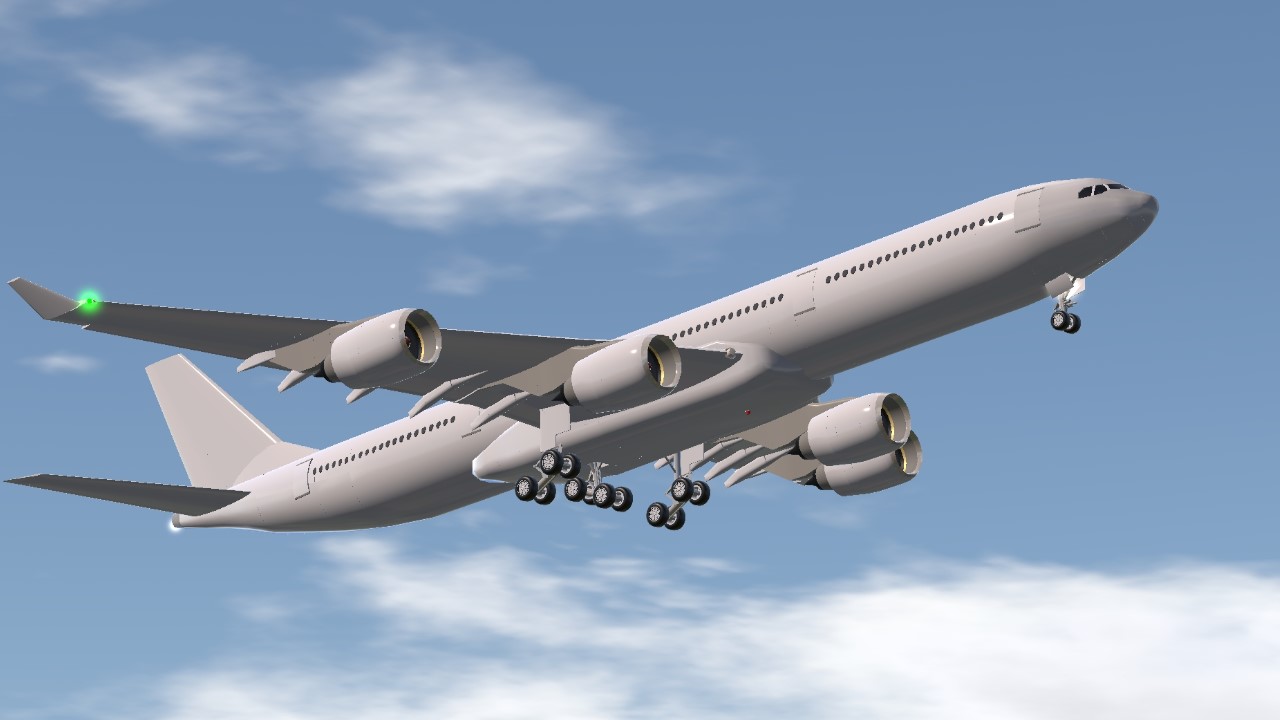
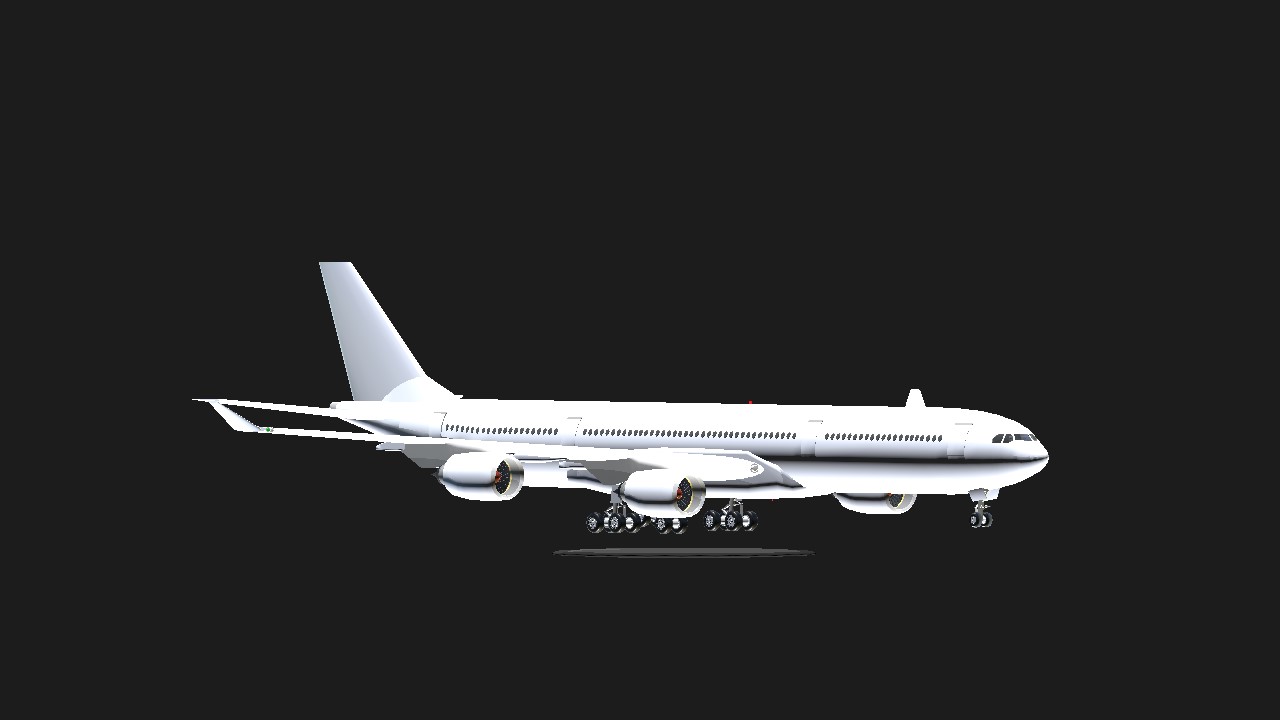
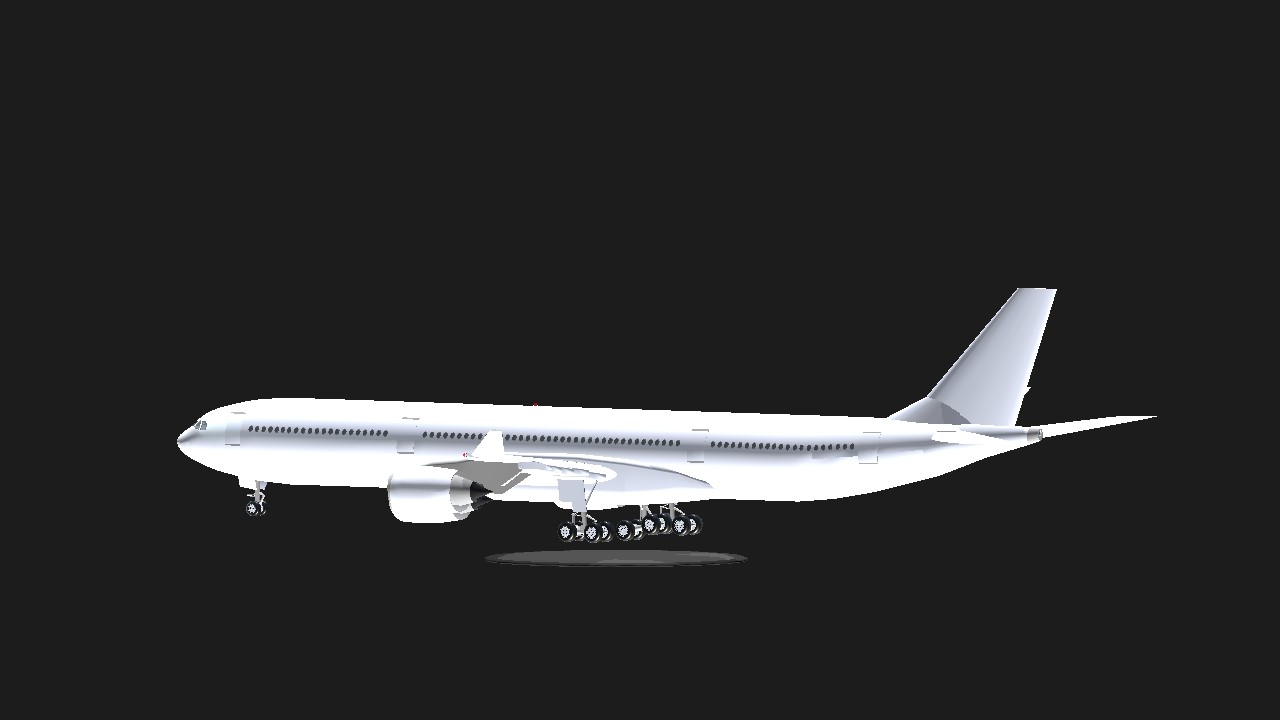

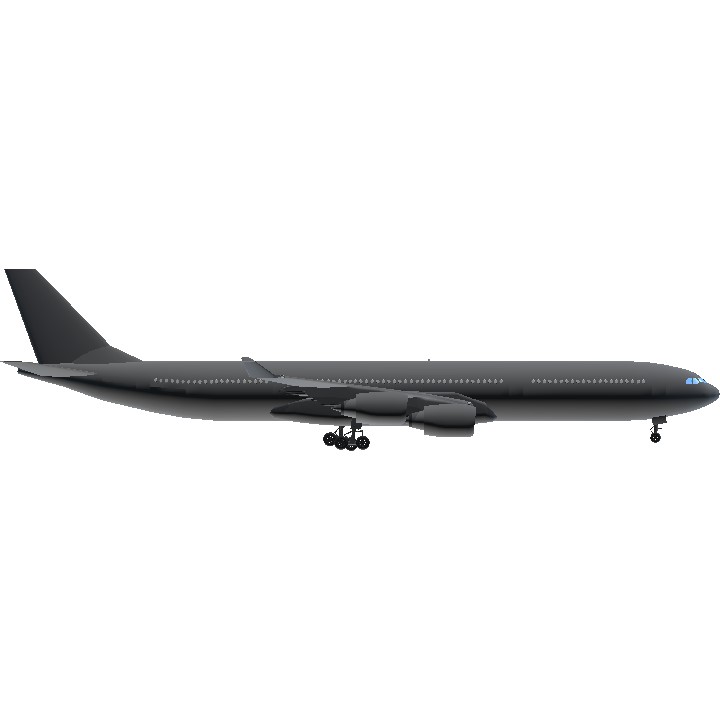
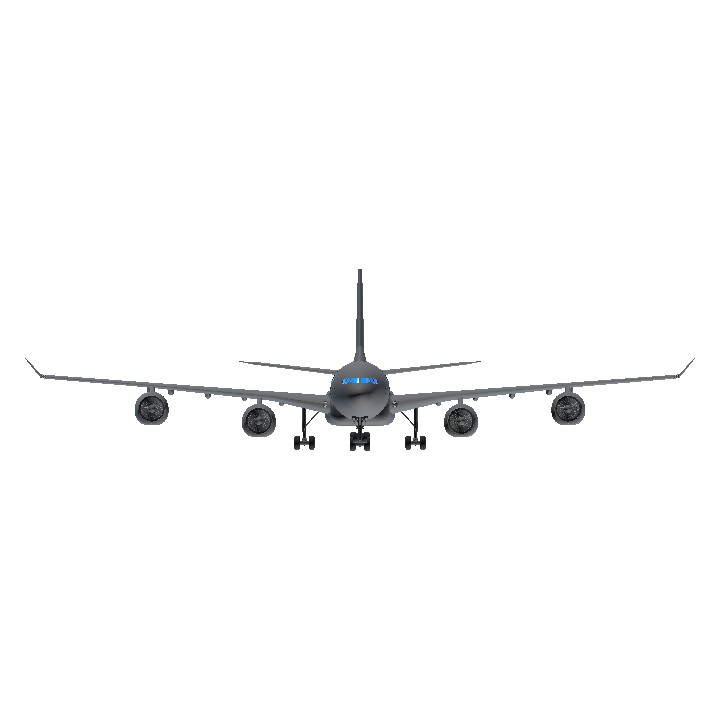
very noice build!!!!
geometry vibes
looooooooooooooooooooooooooooooooooong range plane
this looks very fookin noice mate
This makes my a340 look like rubbish 🤣🤣🤣